103 Pro Death Penalty Quotes by Victims' Families whom justice was served in the U.S.A (2005 to 2009)
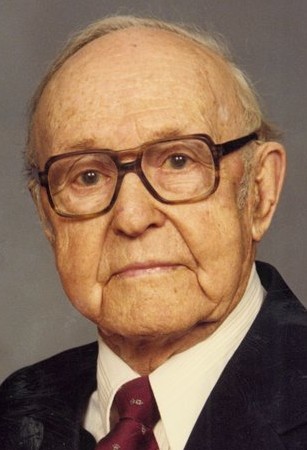
|
Summary: Curtis Faircloth, a grandson of Darter's, who also watched the execution, said it was very peaceful, orderly and humane. "And it should be that way," he added. Darter, a Baptist preacher, would have supported Simpson's sentence, Faircloth said. "Punishment in the Bible is severe and complete," he said. "In a Biblical context, what happened last night is appropriate." |
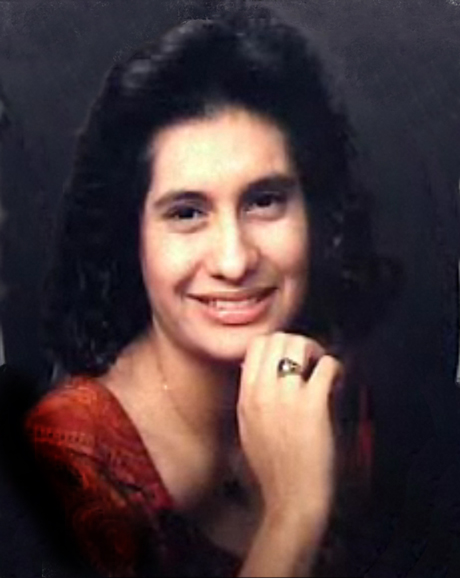
|
More than 11 years ago, Erick Martinez awoke to his mother's cries and tried to defend her from an attack by a knife-wielding intruder at their San Antonio home. On Wednesday night, he watched as the man who also stabbed him was put to death. "It wasn't difficult," he said after witnessing the execution of 38-year-old Luis Salazar. "I was kind of looking forward to it." |

|
Summary: McNair and another man went to the home of Ella Foy Riley, an elderly widow who lived alone and occasionally hired McNair to do yard work. When Ella came to the door, McNair asked her if he could borrow twenty dollars. Riley told him she had no money to lend him. McNair then asked if he could have a glass of water. Ella invited him in, and when she turned around McNair grabbed her by the neck and stabbed her in the throat. When the blade of the knife broke off in Ella’s neck, McNair’s companion retrieved another knife from the kitchen and McNair stabbed Ella in the neck again, then strangled her for several minutes as she bled to death. When an officer came to his house the next morning, McNair admitted killing Ella and later directed officers to the place where he had dumped the purse. McNair was originally convicted and sentenced to death. On direct appeal, the sentence was vacated and a new hearing ordered. The second jury recommended a sentence of life without parole by a vote of 8-4. The court rejected this recommendation and again sentenced McNair to death. McNair's accomplice, Olin Grimsley, received a life sentence for first-degree robbery for his role in the attack. Pat Jones and her brothers Calvin, Don, John, Bobby and Wayne Riley wore buttons with their mother's photograph for the execution. The buttons said "You are not forgotten." Wayne Riley, the youngest of the sons, issued a statement afterward: "I thank God for keeping myself, my four brothers and my sister alive and in good health so that we were able to see justice finally done. I ask that you pray for my family in the coming days and for the Willie McNair family, too, for they ... have suffered for what he has done." Wayne Riley also said: "I can forgive Willie McNair for what he did because he paid the price with his life." Later the six children gathered with other family members for a candle light vigil. Participating was District Attorney Doug Valeska, who prosecuted McNair. |

|
Summary: 22-year-old Tami Engstrom met Biros at the Nickelodeon Lounge in Masbury, Ohio. She had gone there to socialize with her uncle and became so intoxicated she passed out in her chair. As the bar was closing, her uncle took her keys from her and Biros volunteered to take Tami for coffee to help sober her up. Biros and Tami left the Nickelodeon in Biros's car and her uncle remained at the bar after closing and waited for Biros to return with Tami. However, neither Biros nor Tami ever returned. When Tami did not come home that night, the police were called. Biros told the police and Tami's family that she had "freaked out" in his car, and she jumped out and ran through yards and he could not catch her. He later told police that he touched her leg and she fell out and hit her head on the railroad tracks. After consulting with counsel, Biros showed police the location of Tami's body, which had been dismembered, eviscerated, and buried in two different counties in Pennsylvania. Tami's head and right breast had been severed from her torso. Her right leg had been amputated just above the knee. The body was completely naked except for what appeared to be remnants of black leg stockings that had been purposely rolled down to the victim's feet or ankles. The torso had been cut open and the abdominal cavity was partially eviscerated. The anus, rectum, and all but a small portion of her sexual organs had been removed from the body and were never recovered by police. The cause of death was strangulation. At trial, Biros denied admitting to the murder, and testified that Tami had jumped out and fled from the vehicle. He followed and inadvertently struck her. Biros denied having had any sexual intentions toward Tami, but admitted cutting out her vagina and rectum thirty to forty-five minutes after he killed her. The medical examiner testified that there were 91 separate cutting or slashing wounds on the recovered body. "This is my happy day that I was here to see this execution," said Mary Jane Heiss, the victim's mother. She watched Biros die from her wheelchair while hooked up to an oxygen tank because of lung disease.
"I'm just glad the
state of Ohio came up with the procedure," said Tom Heiss, the dead woman's
brother. "I have no thoughts for him. I'm glad
he's gone. It brought some closure to our family." The Heiss family
applauded briefly after Biros' death was announced. |
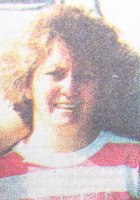
|
Linda's mother, Dora Azrak, said Friday night she was relieved that Williams had finally been executed. But it was a tough day for her while she waited on word at her Florida home. "It just brings back all these memories." She's looking for closure now. "I'm just hoping I will get better," she said. Since the murders she's been depressed. And it was hard knowing that for two years after the murders Williams was free.” |
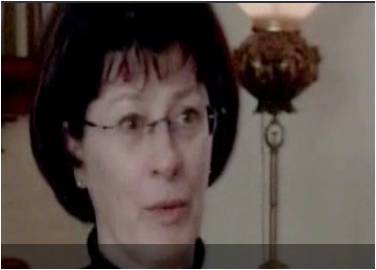
|
Patricia Pendergrass, sister
of victim Bryon Schletewitz, told ABC News: "His
mind is still very clear. His mind is just the way it was when he was 50 years
old and planned this heinous crime. "He knows
exactly why he will be taken into that execution chamber." "It will close a chapter for
me,"
said Schletewitz's sister, Patricia Pendergrass, who is the last surviving
member of her family. |

|
Summary:
Following the execution, Bounds' husband, Charles Bounds, spoke to reporters. "I don't have much to say. I just think it took too long," he said. "I have had this on my mind for 20 years, and it really takes a lot out of me." Bounds then spoke harshly to Mississippi Department of Corrections Commission Chris Epps, though Epps was not the one who halted the execution. Tonight, they hugged. "Justice has just now been brought to bear against the man who admitted killing (Mary Bounds)," Epps said.
Bounds' daughter, Jena Watson, also spoke, saying her mother would have wanted people to forgive Berry. "Tonight, we feel that we have received justice for what was done," she said. |

|
The victim's mother, Dottie Poage, also witnessed the execution. She described her son as someone who wanted friends, and made a bad choice in befriending Elijah Page. "He stepped out of those boundaries, and considered someone a friend who took his life and he paid the ultimate price," said Poage. "Elijah Page had the ultimate penalty for his ultimate crime. And for that I am proud of the state, the attorney general, the governor, everyone at the penitentiary for a job well done. I am proud to be an American." Dottie Poage of Rapid City, whose son, Chester, was murdered in March 2000 after being beaten and tortured by three men in Higgins Gulch west of Spearfish, answered that this way: "Can you put a price on your child's life?" "Can
you put a price on your own life?" Poage said, with
emphasis. "To me, it's worth every damn
cent." In her own way,
Dottie Poage said she "respects" one of the men who tortured and
killed her son in a Spearfish canyon 11 years ago. "He
said he can't take it back, but that he took full responsibility for what he
did. To him, being executed meant accepting his punishment and following
through with it so he could come to grips with himself for committing the
crime. And I do respect that." Monday (15 October 2012) night's execution of Eric Robert was the first since Elijah Page was put to death by lethal injection in July 2007. Page was sentenced for his role in the brutal killing of Chester Allan Poage. "You know, my son's life was cut way too short. He was never able to marry and have children, to give me grandchildren. That's something that I can only vision in my mind. What if?" Dottie Poage said. It's that question that lies at the heart of the pain and loss still felt by Dottie Poage. In 2007, Poage witnessed the execution of Elijah Page, one of two men sentenced to die for the brutal 2000 murder of her 19-year-old son. "It does bring somewhat of closure, some sort of calm, but it still does not bring your loved one back," Poage said. Poage says that her heart goes out to Lynette Johnson, the wife of murdered Correctional Officer Ron 'R.J.' Johnson. "I can very much identify with her as she probably can with me, knowing that one step has been done and it prepares you for the second step and the final time," Poage said. Just as Rodney Berget is still awaiting his execution in the murder of officer Johnson, Briley Piper is also on death row for his role in the killing of Poage's son. "You have to wait. You have to wait for the process to be done accordingly," Poage said. But more than 12 years after the murder of her son, Poage says she still has faith in the system and the death penalty. "It does not bring your loved one back but it helps to strengthen why we have this system to help us, to help make us a little bit stronger, to give us a little more hope for other people," Poage said. Briley Piper is in the process of appealing his death sentence. However, Poage says she's confident that the sentence will ultimately be carried out and plans on being there to witness the execution. |

|
Dzong Tu, a Vietnam-born graduate student in
economics at Cornell University in New York, is believed to have been Ross'
first murder victim. Her death followed a string of rapes on campus in the
spring of 1981. Ross also was a student at the university. "We will always miss my sister," said Lan
Tu, Dzong's brother, "and I feel that this was
only (a) small measure of justice for the pain that Michael Ross caused our
family and the loss, but it is an ending." |
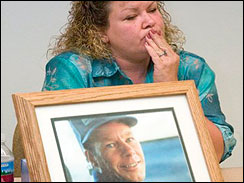
|
Cheryll Witz, who's father, Jerry Taylor, was
fatally shot on a Tucson, Ariz., golf course in March 2002, said she was
unhappy that Muhammad didn't say anything before he died. But she said his
execution begins a new chapter in her life. "I've
waited seven long years for this," she said. "My life is totally beginning now. I have all my
closure, and my justice and my peace." "When Muhammad was put to death, I thought justice was served," Cheryll Shaw said at a family home. Her father, Jerry Taylor, was killed by D.C. snipers John Allen Muhammad and Lee Boyd Malvo on a Tucson golf course.
"The first thing that went across my head when the execution started was just reliving everything of how my dad was killed," she said. "But then you think, 'this is another life being taken,' but then when you sit back and realize that this was my father he took place in killing, I believe he got what he deserved," Shaw said. |
|
|
Nelson Rivera, whose wife, Lori Ann
Lewis-Rivera, was gunned down as she vacuumed her van at a Maryland gas
station, said that when he watched Muhammad's chest moving for the last time,
he was glad. "I feel better. I think I can breathe
better," he said. "I'm glad he's gone
because he's not going to hurt anyone else." |

|
Edwin Shelley, whose daughter Leslie Shelley
was killed by Ross along with her best friend in 1984, said the convicted
killer got what he deserved. "We have waited 21
years for justice, and I would like to thank the jury in Bridgeport, the jury
in New London, and finally the state of Connecticut for finally giving us the
justice that our children are due." For two decades, Lera Shelley endured what seemed like endless court hearings as she waited for the execution of her daughter's murderer, serial killer Michael Ross. It was all worth it, Shelley said, the moment she saw Ross die by lethal injection in the death chamber at Osborn Correctional Institution in May 2005. Finally, she said, there was justice for 14-year-old Leslie and the seven other women whom Ross admitted killing in the early 1980s. "When I saw Michael Ross take his last breath, I knew it was all over. No more appeals, no more 'Walking with Michael' on the Internet," Shelley said Wednesday 3 April 2012. Before his death, Ross' prison writings were posted on a Web page in a newsletter titled, "Walking with Michael." But with the state's death penalty near repeal, Shelley said that other family members of murder victims might not get the chance to get the justice and closure she said she found in execution, a finality she said she needed to move on in life. "It was like a big cloud that had been hanging over our head for years had finally been lifted and sunshine was coming in," said Shelley, 68, of Griswold. |
|
Summary: Two months after he had been paroled from prison, Michael Richard approached Marguerite Dixon’s son, Albert, in front of the Dixon home in Hockley and asked if a yellow van parked outside the home was for sale. Albert said the vehicle belonged to his brother who was out of town and suggested that Richard come back another time. Richard left. When Albert and his sister, Paula, left a few minutes later, Richard returned and entered the house. He took two television sets and put them in the yellow van, sexually assaulted Mrs. Dixon and shot her in the head with a .25 caliber automatic pistol. Richard admitted he was involved in Mrs. Dixon’s murder and offered to help find the murder weapon. Police found the weapon and testing revealed it to be the gun that fired the fatal shot. "It means in this particular case, the system worked, it was thorough," Stephen Dixon, whose mother was killed in the attack, said after watching Richard die. "The person executed deserved what he got." Dixon said he wasn't too concerned with the delays. "I was told to expect such things," he said. "It's been a long 21 years." |
|
|
Haney's brother, Talladega Police Lt. Billy Haney, was among the victim's family members who witnessed the execution. "I'm there for the family and to see justice carried out as what was sentenced in the lower courts," the officer said in an interview. "I don't want people to think I'm in it for revenge. Dad used to say he'd never live to see the man executed. He died at 80 in 2000," said another brother, Daniel Haney, who also was present at the execution. He said the murder had tortured the family. The victim had seven sisters and three brothers.
|
|

|
Summary: Julie Heath's vehicle was discovered abandoned on Highway 270, west of Malvern. A week later, her body was found on rural property approximately 7.5 miles from her vehicle. Although the autopsy failed to reveal the cause or manner of death, medical evidence showed likely trauma to the head, and defects to her clothing were consistent with a cutting wound. At trial, Nance's brother and sister testified that, after initially denying any involvement in the crime, Nance later stated that he had accidentally killed the victim. Nance told them that Heath's automobile had broken down on the road, that he picked her up, that his work knife slid out of his pocket, that as he moved to put the knife in the glove compartment, the victim turned started kicking him, that he put his hand up to keep her from kicking and hitting him, and that the knife fatally lodged in her throat. The jury didn't buy this account.
"This is not easy for any of us and we do feel for his mother, his family," said Johnie Hood, a cousin of the victim. "I just pray that Julie rests in peace now. He couldn't say he was sorry. What he went through tonight was painless compared to what he put Julie through." Hood and other family members watched the execution via closed-circuit television in a prison office. Heath's mother Nancy killed herself a year after her daughter's murder.
"It brings closure that he is gone, but it will never bring back Julie - what he's done to our family, I hope that he did say he's sorry to someone for what he had done," said Belinda Crites, another cousin. "We want to make sure the devil dies. He's gone now so I hope they can rest in peace."
|
|
“It won’t bring my brother back,” said Sulema Balverde, 34, Garza’s older sister. “But it will bring him justice.” “I want to watch him breathe his last breath,” Irene Garza said of the man convicted of killing her 22-year-old son, Carlos Garza, whose body was found nine years ago in a pool of blood, two gunshots to his head. Irene Garza, 54, said she understands the pain Blanton’s mom must feel. “It wasn’t her fault her son did what he did,” she said. “She’s going to miss her son the way I miss my son. But we didn’t cause these problems. My son was a good boy.” Several of Garza’s relatives attended the execution, including his mother Irene Garza, wife Yvonne Garza and sisters, Sulema Balverde and Irene Escobar. “I miss my son dearly and have waited for this day to finally get here,” Irene Garza said in a released statement. “This will be closure for me.” Yvonne Garza called Blanton’s execution one that provided both justice and closure for herself and the couple’s son. “I know it won’t bring him back,” she said. “We can finally move on with our lives.” |
|
|
Summary:
Mark Velcheck of Florissant, one of Wood's brothers, said earlier Tuesday he was relieved that the sentence would be carried out. "I'm glad for Barbara that this person will pay the price," said Velcheck, a witness. "You hate to say you want somebody to die, but this guy deserves it."
|
|
|
Summary:
The victim's sister, Peggy Robbins Smith, planned to watch Moody's death by lethal injection at Raleigh's Central Prison so she could keep a promise to her brother, Donnie Robbins. "I made my brother a promise when I was with him at the casket," said Smith, 47, of Thomasville. "I promised him that I would see justice done. I feel like this will be a way to fulfill my promise."
|
|
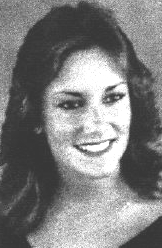
|
Summary:
Ricky Paules, the mother at whom Rolling had glanced, said she had one reaction: ``Hatred. Very, very bitter throughout the whole thing. I saw his breath go out of him. . . . We waited for this time. And justice was done.'' With Rolling's death, she said, she could remember only her daughter, Tracy Paules. |
|
Summary: "Killer's final words will be directed to his family; Prison officials don't expect repeat of vile outburst given by Satanist during trial for killing three people," by Tom Beyerlein. (August 8, 2006) LUCASVILLE — Condemned triple murderer Darrell Wayne "Gator" Ferguson of Dayton said if he gives a final statement on the execution table this morning, it will be directed at his family, a prison spokeswoman said Monday. That may mean Ferguson, a Satanist, isn't planning a repeat of the hateful diatribe he issued against his victims at his 2003 sentencing. Regardless of what he says, prison policy doesn't allow the warden to pull the microphone plug. "We can't restrict the content or duration of his statement," spokeswoman Andrea Dean said. "We can't interfere with his freedom of speech." Eight people, including the sons of Ferguson's disabled and elderly victims, are to watch him die by lethal injection at the Southern Ohio Correctional Facility. Ferguson's mother, Donna Davis; stepfather, Paul Yates; and natural father, Clarence Vela Sr., also are scheduled to be witnesses. Late Monday, Ferguson, 28, gobbled a "special meal" of three T-bone steaks cooked medium rare, two breaded chicken breasts with a side of ranch dressing, chocolate ice cream and Mountain Dew. He enjoyed a contact visit with relatives, listened to radio and chatted with his executioners about life in Dayton. Ferguson's family will donate his body to Wright State University for biological study, Dean said. Ohio Gov. Bob Taft declined to grant clemency Monday. The only thing that could stop the execution is if Ferguson changes his mind and decides to exercise his appeals, Dean said. Ferguson pleaded guilty and asked for the death penalty in the Christmastime 2001 stabbings of Arlie and Mae Fugate and Thomas King Sr. in East Dayton. A drug addict, Ferguson was on Christmas leave from a halfway house and used robbery proceeds to buy intoxicants. Immediately after the execution, a family friend of one of the victims, Chris Purdue, said, "Goodnight. I hope he stays in hell forever." Ferguson, a long-time drug user and high-school wrestler — he now weighs 285 pounds — taunted his victims' families at the sentencing phase of his trial two years ago when he said he took satisfaction and pleasure in killing their loved ones. “I will never show any remorse, even on the day I die.” He didn't. |
|
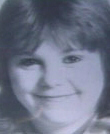
|
Summary: 17 year old Alicia was kidnapped on the way to a store two blocks from her home in Terre Haute by Benefiel, who was armed with a gun and wearing a mask. Alicia was tied-up and gagged, driven to Benefiel’s home and taken inside. During 4 months of captivity inside Benefiel’s home, Alicia was raped and sodomized over 60 times at gunpoint. Most of this time she was chained and handcuffed to a bed. He glued her eyelids shut, put tape over her eyes, and toilet paper in her mouth. She was cut with a knife and beaten. After 3½ months, Alicia saw a second girl, Delores Wells, in the home. She was naked and handcuffed on the bed, with tape over her eyes and mouth. She later saw Benefiel beat Delores and put superglue in her nose, then pinch it together. Benefiel left the home for 2 hours and upon his return, confessed to Alicia that he had killed and buried Delores. When police knocked on the door, Benefiel stuffed Alicia into a ceiling crawl space. The police entered with a search warrant and rescued her. The body of Delores was found soon after in a wooded area. An autopsy revealed injuries to her vagina and anus, and established asphyxia as the cause of death. (insanity defense)
Margaret Hagan felt relief when she received word early Thursday that the man who killed her daughter 18 years ago had been put to death. "I never thought the day would come, and when it did, it went fast," she said. "I'm going to try to put him as far behind me as I can."
|
|
Summary:
Young's mother and grandfather witnessed Carr's execution. "It's finally over for our family," said Young's mother, Deniese Cail. "He's gone and he did not go where my son is. My son is in heaven."
|
|
|
Summary: Luis Ramirez was convicted of capital murder and sentenced to death for the murder of his ex-wife’s boyfriend, Nemecio Nandin. Nemecio Nandin was a fireman and part-time washer/dryer repairman who was dating Ramirez’s ex-wife. Ramirez had been jealous of any of his ex-wife’s boyfriends, and Ramirez’s daughter testified that Ramirez was visibly upset about his ex-wife’s relationship with Nandin. Days before Nandin’s murder, Ramirez was seen meeting with an associate, Edward Bell, at a house where Bell and his girlfriend had previously lived. At around the same time, Bell told the man at whose home he was then staying that Ramirez had hired him to kill a fireman for $1,000. Nandin was killed at the house where Bell formerly lived on April 8, 1998, shot twice in the head with a shotgun and buried on the property. His truck was later discovered at a local Wal-Mart. Bell’s girlfriend testified that she left Bell alone, without a car, at the murder scene house between 11 A.M. and noon on the day of the murder, and that Ramirez dropped Bell off at the girlfriend's aunt’s house between 3:30 and 4 P.M. that afternoon. As she drove Bell back from her aunt’s house back to the murder scene later that afternoon, she saw Bell throw two latex gloves out of the car window. Police later recovered the gloves and a set of keys fitting Nandin’s truck. A subsequent search of Bell's girlfriend’s car revealed Bell’s wallet, containing two of Ramirez’s business cards and handwritten notes including directions to Ramirez's ex-wife's house, her address, her uncle’s address, and descriptions of her and her uncle’s cars. Police also discovered in the car a pair of jeans and a glove spattered with Nandin’s blood. Shortly after the murder, but before his arrest, Bell described the murder to the man he was staying with. Bell told the man that he and Ramirez had gone to the house where the murder occurred, called Nandin for a washer repair, handcuffed Nandin when he arrived and shot him with a shotgun, burying him on the property. Testimony indicated that Ramirez had purchased the same brand of handcuffs years earlier. The state also introduced evidence suggesting a plausible timeline, a period of time in which Ramirez could have been with Bell at the murder scene, committing the murder. Ramirez’s girlfriend testified that on the day of the murder Ramirez had packed a bag and left his home between 12:30 and 1:00 P.M. and returned around 3:00 or 3:30 P.M. Finally, the state introduced evidence that Ramirez and Bell were seen together after the murder and that on at least one occasion Bell, who had no apparent means of support, returned from such a meeting with cash. UPDATE: Texas carried out the 15th execution of the year just after 6 p.m. Thursday as convicted killer Luis Ramirez was given a lethal injection for his role in the 1998 shooting death of a San Angelo firefighter who had dated Ramirez’s ex-wife. Ramirez was sentenced to die for initiating the murder-for-hire plot that led to the death of firefighter Nemecio Nandin, 29. An accomplice, Edward Bell, was convicted and sentenced to life in prison. Prosecutors described Ramirez as a jealous ex-husband so obsessed with his former wife that he paid $1,000 for help in a plot leading to Nandin's death. The 42-year-old inmate denied any involvement in the 1998 shotgun slaying. The firefighter's body was found in a shallow grave in a rural area about 25 miles northeast of San Angelo. The Texas Board of Pardons and Paroles rejected a defense request Wednesday to commute the inmate's sentence to life. The board also rejected a request for a 120-day reprieve. Ramirez also lost an appeal to the Texas Court of Criminal Appeals, prompting his lawyers to appeal to the U.S. Supreme Court, which refused to act to block the execution late Thursday afternoon.
"We just wanted to know justice would be done," Able Nandin, the victim's brother, said after watching the execution. "Justice was done." Addressing his slain brother by name, he added, "We miss you and we love you."
|
|
|
“I can sleep a little more better,” Latisha Clark, Patrick Clark’s twin sister, said after watching Moore die. “Knowing that he’s not going to be on the street, I can feel more comfortable,” her sister, Peggy, added. “Justice has been served.” |
|
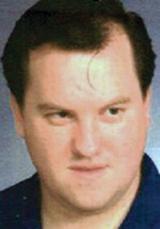
|
“This is the final step to closing everything,” Yost’s widow, Angie Houser-Yost, said. “They have caused a lot of pain for a lot of people, not only for my family and his family but for the people who walked in and found Richard, their visions, what they will live with now.” |

|
John Allen Muhammad was a cold-blooded murderer. He never gave any sort of apology to any of the families of the victims he murdered. He stole so many precious lives from the families and friends who loved them. He deserves the punishment he was given. "Our loved ones will never come back." I believe justice has been served. I would like to thank everyone who worked so hard on this case. I'm so proud that the United States government has laws set in place to protect its citizens from people like Muhammad and Malvo. These men thought they were above the law and could get away with the horrible things they did. The American law enforcement community has proved them wrong, and for that I am very grateful. Thank you. Muhammad's death has brought me and my family a measure of peace. I wish that Malvo could face the same punishment. |
|
Vaughan said, "I think justice has been done . . . he got what the 12 jurors said he should get."
Last night after the execution, Vaughan, widower of the woman Green murdered, said, "He got his wish."
"I feel like we're the puppets and they're being the puppeteers," said Marsha Brown, one of the Vaughans' 2 daughters. She watched Green's execution with her father, sister, husband, stepmother and 2 local officials. "It's just a fine line between being hopeful and helpless. I really regret that another life has to be involved - that an execution has to happen - but I just think it needs to be carried out," she said. |
|
|
Summary:
"My brother died a horrible, horrible death," said Gene Langley, 48, of Rocky Mount, N.C. "Christopher, he was a coward. ... He needs to be punished." Gene Langley and six other family members, including John Langley's adult daughter and son, plan to witness Emmett's execution. "It's not going to bring my brother back by no means in this world, but it does not allow him to live and that's what I'm after," Gene Langley said. "He didn't kill one person, he killed five — he killed a brother, he killed a son, he killed an uncle, he killed a father, and he killed a grandfather," he said. |
|

|
Summary: Twenty-year-old Julie Kerry and her sister, nineteen-year-old Robin Kerry, made arrangements with their nineteen-year-old cousin, Thomas Cummins, to meet them shortly before midnight on April 4, 1991. The Kerry sisters were intent on showing Cummins a graffiti poem the girls had painted on the Chain of Rocks bridge. The abandoned Chain of Rocks bridge spans the Mississippi River at St. Louis and has been a site of drinking and partying by trespassers. Earlier that same evening, defendant Marlin Gray, Reginald (Reggie) Clemons, Antonio (Tony) Richardson and Daniel Winfrey met at the home of a mutual friend. Defendant was the oldest and largest of the group. At defendant's suggestion, the four left for the Chain of Rocks bridge to "smoke a joint." The men confronted the Kerry sisters and Cummins at the bridge. Clemons ripped off Julie Kerry's clothing and raped her as she was held by Richardson. Julie and Robin were then raped by Clemons and Richardson. Defendant told Winfrey to watch Cummins. Then, with the assistance of Clemons, defendant tore off Robin Kerry's clothing and raped her. Clemons then forced Cummins to surrender his wallet, wristwatch, some cash and keys. Clemons ordered Cummins and the Kerry sisters to step out onto the concrete pier below the metal platform. The three were told not to touch each other. Julie Kerry and then Robin were pushed from the pier of the bridge, falling a distance of fifty to seventy feet to the water. Cummins was then told to jump. Believing his chances of survival were better if he jumped instead of being pushed, he jumped from the bridge. The body of Robin Kerry was never recovered. Julie Kerry's body was found three weeks later in the Mississippi River. Cummins testified at trial. Daniel Winfrey, who was 15 at the time of the murders, is serving a 30-year sentence after pleading guilty to nine charges, including two counts each of second-degree murder and forcible rape, and agreeing to testify against the other men. Reginald Clemens is on death row. The Missouri Supreme Court reduced Antonio Richardson's death sentence to life in prison because he was sentenced to death by a judge, not a jury. Eugene Cummins, father of Cummins and uncle of the deceased sisters, said Wednesday that Gray’s execution would not affect him because his family was already at peace. “I don’t mean to sound callous or uncaring, but Marlin Gray, for example, is to be executed tonight and he has made his own bed and he must lie in it,” he said. “What he did hurt my family years ago, but he no longer has the power to hurt my family.”
|
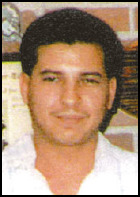
|
Summary: Richard Cartwright, Dennis Hagood and Kelly Overstreet hatched a plan to rob a gay man by posing as male prostitutes. They thought such a victim would be an easy target because he would be less apt to report the robbery to police. They met 37 year old Nick Moraida after he pulled up in a small black sports car. The trio invited Moraida to go drinking with them at a remote gulfside park. When they reached the secluded area, Cartwright pulled out a gun and said, “This is a robbery. Put your hands on the cement [wall].” At the same time, Overstreet held a knife to Moraida’s neck. Their plan turned deadly when Moraida refused to give up and tried to flee. One of the men tried to stab Moraida but could not kill him. Cartwright then shot him in the back with a .38 caliber pistol. Hagood was convicted and sentenced to 20 years imprisonment. Overstreet was convicted and sentenced to 50 years imprisonment. Both testified against Cartwright.
Moraida's sister, Angela Moraida of Corpus Christi, said last week she already had forgiven Cartwright. She said his death will bring relief to the family. "At least we know he's never going to hurt anybody else," she said by telephone after the execution. She and her family did not attend.
|
|
The former truck driver-turned-drifter confessed to killing five people including Joseph Daron Jr., 46, of Milford. Daron’s 23-year-old daughter decided not to witness the execution, but said she was happy to see her father’s murderer loaded into the hearse. Rachel Daron and her mother, Sandy Bronner, both of Amelia, watched from a prison visitors’ room. “I’m just glad this is finally over,” said Rachel, who was 4 when her father was fatally shot twice in the chest by the hitchhiker. Rachel Daron said she wasn’t disappointed that Fautenberry didn’t make a statement “because I know he’s not sorry. He didn’t care. Even if he did (make a statement) it’s not going to bring my dad back or any of the other victims back. I just saw him go to the hearse and that was good enough for me.” Rachel said she doesn’t remember much about her father. “He liked to drink coffee. I never really got to know him. He was stolen from me.” |
|
|
Summary:
"They can hang him," Harville's father, Hosea Harville, 83, of St. Louis said of his son's killer in a telephone interview. "They need to drag him right now. He killed a good man. I put my son through school. He went to church. He was just starting out. That man took advantage of him."
|
|

|
Summary: Betty Jane May was found dead in her basement room at a boarding house in Reno. Steven Floyd, who lived next door, had been drinking at a nearby bar that night went to May's home to try to borrow some money. Floyd knocked on her door, which was slightly open, but there was no response. He opened the door and saw May kneeling by her bed with her upper body facedown on the bed. He turned her over and realized that she was dead. Floyd immediately went home and told the landlords, and the police were called. Fingernail scrapings and evidentiary swabs from May's vagina and left foot were collected. The swabs tested positive for semen. The autopsy showed that she was beaten and manually strangled to death. She had also suffered a forceful traumatic sexual penetration not long before her death. The case lay dormant for almost 12 years without leads. In 1999 DNA testing of the evidence was requested and compared to a blood sample from Mack taken in 1994, when he was charged and convicted of strangling a prostitute, Kim Parks. (Mack was Park's pimp) While Mack was serving a life without parole sentence for that murder, DNA testing showed that the semen taken from May's body and the blood stains on her blouse matched Mack. The blood and tissue found under May's fingertips was consistent with Mack's DNA. Mack waived jury trial and was found guilty by the court and sentenced to death by a three judge panel. The only evidence presented at trial connecting Mack to the murder was the DNA evidence. The son of Mack's
victim figured his own reaction to the broad grin wouldn't make the evening
news. "You probably are going to edit this,"
Charles May told reporters outside the prison just after Mack was put to death
by lethal injection. "But I thought, `That rotten
son of a bitch. How can he have the gall to do that at the last second and get
away with it?' We're glad he is gone." "Daryl Mack will never harm anyone ever again," May said. "It has been a long and very rough road for us all. Tonight that journey ends and closure begins. Justice has been served." "A weight was lifted off our shoulders," he said. "Life starts over. We don't have to worry about Daryl Mack occupying our lives, controlling our lives, wondering when the next appeal is going to come. It is a new beginning." "Mom couldn't have asked for a better Mother's Day gift. Rest in peace, mom." |
|
Summary: After witnessing the execution, the families of Leonardo and Annette Chavez said they were glad justice had been served, Sulerna Esparza Medrano, Monica’s mother and sister to Annette, worked on a statement with Monica, which Monica read after the execution. “When you committed this brutal crime, you took away a loving mommy and daddy from two precious children whose lives have been shattered forever,” Monica read through clenched teeth. “So now, we are here today as the tables have turned and it’s your turn to die.” Explaining how loving and loved Annette was to her family, Monica began to break down, saying, “If she didn’t know you and you were starving on the streets, her and Leo would open the doors to their hearts and help you the best way they knew how.” |
|
|
Jimmy Adams, the victim’s son, described Wednesday as “a sad day.” “We lost a wonderful man. James Moody Adams was our dad. He was a good, humble, giving, kind man,” he said. “… It was sad to see the loss of that other family’s experiencing today. I think we forgave him a long time ago. But the consequences still had to be carried out. It was just.” Another son, Kent Adams, said his family witnessed the execution out of a sense of duty. “We all wanted to be here to honor our parents,” he said.
|
|
|
Judy Woodard, Union City, said early today that her great-aunt now can rest in peace. "It's been a long time. I'm so glad it's over," she said. "Justice has been done." |
|
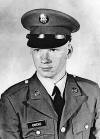
|
Summary: In the early morning hours of February 28, 1979, Williams and three friends were riding around in two cars, smoking PCP-laced cigarettes, looking to "make some money." After making two unsuccessful restaurant and liquor store robbery attempts, they eventually went to a 7-Eleven store where 26 year old Army veteran and father of two, Albert Lewis Owens, was working the overnight shift and sweeping the parking lot. Armed with a shotgun, Williams led Owens to the back room of the store. While one of the companions emptied the cash register drawer and took $120, the defendant ordererd Owens to get on his knees and then shot him twice in the back with the shotgun. Williams said later that he did so to eliminate witnesses. One of his accomplices testified at trial that Williams later made fun of the noises made by Owens when he was shot, causing Williams to laugh hysterically. Eleven days later, at about 5:30 a.m., Williams and another man broke down the door and entered the Brookhaven Motel at 10411 South Vermont Avenue in Los Angeles and shot to death 76-year old Thsai Shai Young, his 63-year old wife Yen-I Yang and their 43-year old daughter Ye Chen Lin. He took $50 in cash and left. Williams and Raymond Washington co-founded the Crips, a street gang, in 1971. While incarcerated on Death Row, Williams gained notoriety by authoring children's books with an anti-gang message and promoting peace. In recent years, he was nominated for the Nobel Prize in Literature and for Peace. He gained unparalelled support from celebrities and anti-death penalty activists, including Mike Farrell, Jesse Jackson, Jamie Foxx, and others who argued that his work and redemption on death row merited a reprieve from execution. "He killed my father, and that will never change," she said. "I think he is a horrible and awful man. "I don't think it's fair that he gets to breathe and walk around and have interactions, and my father, whose only crime was showing up for work, can't do those things," Owens said. "The impact that my father's death had on me is long-reaching and affects me today." Rebecca Owens has been pushing for Williams' execution since she found out he was still alive. She says her father's life should be spotlighted rather than Williams'. She has distant memories of her father, of him running on the beach, working on cars in the front yard, and laughing at her aversion to liver. She has flown to California to visit his grave and to speak about the effect the crime had on her. She initiated a boycott of "Redemption," the film starring Jamie Foxx that tells the story of Williams' life. And she plans to be at San Quentin State Prison when Williams dies by lethal injection. "I want it to be done, to see it over," she said. "He hasn't even confessed -- how can he be a model?" Owens said. "If people choose not to go into crime after reading his work, that's because they choose it, not because of him. "He refuses to take responsibility for his actions," she said. "His apology (for the gang lifestyle), give me a break. His victims are still faceless people. I don't want him dead because I think the death penalty will deter people from crime, but I do believe he should not be living on taxpayer money." Albert Owens' stepmother, Lora Owens, wrote a letter to Schwarzenegger saying that Williams does not deserve clemency and that his professed redemption is an atrocity. "To be redeemed, one must accept responsibility for the deeds and not claim to be redeemed to get out of the punishment set forth," Lora Owens wrote. "Williams has declared his own style of redemption for his own gain. "He is a murderer and has caused the Owens family anguish for the last 26 years," she wrote. "His just punishment, his execution, could provide us some closure and peace." "If there is a controversy against the death penalty, then they need to go to the legislature and work to get it changed, but don't stand behind a killer like Williams because then they don't care what he did," she said. "It could have been your child instead of our child." |

|
Summary: In the early morning hours Woods went to the home of his ex-girlfriend, Schwana Patterson, 35, who had had kicked him out a few days earlier. Her two children, 11-year-old Sarah and 9-year-old Cody, were sleeping inside. Woods crawled through an open window into the children's bedroom. He grabbed Sarah's foot and began beating her chest, then sexually molested her. Woods then forced both children to leave through the window in their nightclothes, put them in his car, and drove to a cemetery. There, he beat and stomped Cody on the head and strangled him. With Cody unconscious, Woods then drove away with Sarah. Cody survived. Based on Cody's statement, police found Woods and asked him where Sarah was, hoping to find her alive. Woods answered, "You will not find her alive. I cut her throat." He then led them to her body. “I’m not a person that likes harm done to anybody, but I believe in justice being done,” Larry Patterson said after watching his daughter’s killer die. “She had no choice. She didn’t get a second chance.”
“I put this behind me a lot of years ago,” said Cody Patterson, now 21, who stood outside the prison and chose not to see Woods die. “It has been a long time coming. I’m glad to know it’s done. I knew it was going to be done sooner or later. “I seen his picture... That’s all I wanted to see,” he said, adding that he recovered from his injuries and that nightmares about the attack have stopped, but that he still had “the scars on the back of my head.” |
|
Summary:
The execution was witnessed by the victim's brother, Jim Kirby, son Nathan, who was just 4 years old when his father died, and other family members. Afterward, Jim Kirby said Boltz's execution was "long overdue." "It was a horrific crime," he said. "It deserved the punishment that was given. "We're all relieved that it's all over with." |
|
|
Summary: DeLozier, age 19, was camping with friends along the Glover River and came upon the campsite of Orville Lewis Bullard, 60, and Paul Steven Morgan, 54. They left and returned that night, ambushed the pair, shot them with a shotgun and a .22 rifle, and stole their pickup, a generator and other camping equipment. DeLozier set fire to the camp, sparking a blaze that burned both bodies beyond recognition. Accomplice Nathaniel Madison pleaded guilty to conspiracy to commit murder, received a 10-year sentence and testified against DeLozier. He was released from prison in 2000. Accomplice Glenney Madison was convicted of first-degree murder and is serving a life prison sentence. Fourteen members of the victims’ families also witnessed the execution from behind one-way glass. Family members declined to comment to reporters after the execution. They released a statement thanking prosecutors for their work. “We have waited nearly 14 years for this day,” the statement read. “We feel that justice has finally been served.” |
|
|
Summary: Wilson killed Lutz after she drove him home from a bar in Elyria. Somehow — Wilson said he didn't know how — Lutz ended up in the trunk of her black Oldsmobile Cutlass after they left the bar and went to Wilson's house. Wilson let Lutz out briefly after she begged to use the restroom, but forced her back into the trunk even though she promised to forget the ordeal if he ran away. Wilson then set the punctured gas tank on fire and walked off while Lutz burned to death. Wilson claimed he was too intoxicated to remember all the details, but told police he remembered this much. Carol Lutz's mother, Martha Lutz, said the execution ended a long, hard road for her family. "We have waited 18 years 29 days for this to happen. It finally has come and we thank God," she said, standing with her husband, son and daughter-in-law after the execution. "People may think we're cruel, but the cruel part of this is not being able to have Christmas with Carol ever again." |
|

|
At the end of the statement, Humphries looked toward the victim's sisters, Kathy Smith Carpenter and Carol Smith Cooley, and mouthed "I'm sorry." Carpenter nodded in response. It appeared that a tear rolled down Humphries' cheek after the exchange. After the execution, Carpenter said she appreciated the gesture. "Shawn gave me something very special tonight when he said to me through the window that he was sorry," Carpenter said. "That was the greatest gift that I could have ever received."
|
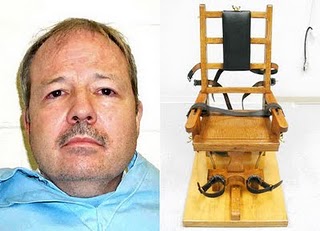
|
Elliott, 60, a former Army intelligence officer from Hanover, Md., died in the electric chair at Greensville Correctional Center, about 60 miles south of Richmond. He was pronounced dead at 9:08 p.m. He had met with his family, a spiritual adviser and his lawyers earlier in the day. Elliott entered the room under the escort of correction officers who attached a metal clasp lined with a moistened sponge to his shaved right calf, affixed a metallic cap lined with a sponge to his shaved head and covered his face with a leather mask. He was then strapped into the oak chair. In the presence of representatives of the attorney general and state corrections officials, an officer in a side room pushed the "execute button" at 9 p.m., sending 1,800 volts through Elliott's body for 30 seconds, followed by a 60-second burst of 240 volts. Elliott's body tensed at the first surge and again a second time when the cycle was repeated for another 90 seconds. The room was silent. Five minutes later, a physician entered and put a stethoscope to his chest. He looked up several seconds later at officials in the plain white room and said simply, "9:08." Robert Finch's sister, Jennifer Finch Robitaille, said the killings have become part of her life because she lost a brother and a best friend in them. Robitaille said she cannot forgive Elliott. "I think he deserves what he's getting," Robitaille said. "Robert's life was cut short by this guy who was jealous, who wasn't happy with his own life. I wonder very often where our family would be, where Robert and Dana's lives would be."
Thrall's two boys, now 15 and 13, were adopted by her brother and sister-in-law, Cameron and Becky Thrall, who live near Seattle. Cameron Thrall said the boys are doing well and speak often about their mother but have not delved into the details of the crime. The Thralls have saved the newspapers and court documents chronicling the murders so that the boys, at an appropriate age, can learn as much as they care to. Cameron Thrall said the boys think that Elliott is receiving the appropriate punishment. And although he is philosophically against the death penalty, he said he thinks the crime deserved the harshest punishment. He also said he feels for Elliott's family, which lost a father and husband. "My personal view is that by taking Elliott's life, it doesn't bring back my sister, it doesn't undo the brutality of her murder and it doesn't erase the scars her children have to bear," said Cameron Thrall, a former Marine. "But do I think someone like that is deserving of death? Absolutely. . . . Put me in a room with him for an hour, and you'd have the same result as the death penalty." Becky Thrall said she was pleased with the outcome. "To me, I feel I can move on," she said. "Never again do I have to think of this person." Adam Thrall, Dana's son, 15, said simply, "Good riddance." |
|
Summary: Reed murdered his ex-girlfriend’s parents in their home. Reed was arrested for driving a car into an Army officer trying to help her. He was sentenced to 37 months in prison after pleading guilty to assault. In prison, Reed wrote threatening letters to Rego. After he was released, he bought a gun and hitchhiked to the Lafayettes' house looking for Rego. Reed was supposed to be on a bus on his way to a federal halfway-house program, but instead killed Joseph and Barbara Lafayette in their Adams Run home in 1994 while he was looking for his ex-girlfriend. The couple refused to tell Reed the whereabouts of their daughter. Reed denied the killings and argued that no physical evidence placed him at the scene. Reed acted as his own lawyer during his 1996 trial. He denied the killings, despite his confession to police and three witnesses who said they saw him come out of the couple’s home after the shooting. Police found in Reed's bag a diagram of the Lafayettes' home and tennis shoes of the same make as shoe prints found in the Lafayettes' yard. The jury took only 30 minutes to convict him. Marsha Lafayette Aleem, 37, the victims' youngest daughter, spoke after the execution. Aleem and two of her uncles witnessed Reed's death. "Today is not a celebration for my family. This is a day about justice," she said. "Today starts our healing process." Over the years, she said, people have gotten to know a lot about James Earl Reed. Now, it's time to know the victims. The Lafayettes made many sacrifices for their three children, putting them through college, Aleem said. Later, all three chose careers in the military. "They're not here to see the grandchildren," Aleem said. "They weren't here to share the happiest moments of our lives. They are the ones that made the ultimate sacrifice." |
|

|
Summary: Wesley Adams Jr., a Captain in the United States Air Force, and his family were visiting his father, Wesley Adams Sr., and his stepmother, Mildred Adams, at their Surry County home. They went on a fishing trip together and returned to the home, where Mildred's son, Steven McHone was staying while on probation for some larceny convictions. As Wesley Jr. prepared for bed with his wife and 2 year old child, they overheard a heated agrument between McHone and his parents about money. A few minutes later, Mildred Adams opened the door to their bedroom and asked if they had taken the gun from the camper. As Wesley Jr. got dressed, he heard three gun shots. When he went into the hallway, he heard Mr. Adams tell Wesley Jr. to call 911. While he was talking on the telephone with the 911 operator, he turned and saw McHone and Mr. Adams enter the back door. They were wrestling and McHone had a pistol. Wesley Jr. immediately dropped the telephone and disarmed McHone. Wesley Jr. went back to the telephone and McHone and Mr. Adams began wrestling again. Mr. Adams and McHone struggled out of the living room and headed down the hallway, out of Wesley Jr.'s sight. Approximately a minute later, Mr. Adams reappeared in the kitchen doorway and said, "Your mother is facedown out back. You have got to get help for her. Your mother's facedown. I don't know how badly she's hurt." As Mr. Adams approached Wesley Jr., McHone came to the doorway carrying a shotgun. When Mr. Adams realized that McHone was bringing the gun up into a firing position, aimed at Wesley Jr., he immediately moved toward McHone, reaching for the gun. McHone fired the shotgun into Mr. Adams' chest, and the force of the discharge threw Mr. Adams into Wesley Jr.'s arms, knocking them both to the floor and injuring Wesley Jr.'s leg. After shooting Mr. Adams, McHone raised the gun in the direction of Wesley Jr. who managed to get up from the floor and take the weapon from McHone. When the struggle ended, Wesley Jr. told McHone to stay down and not to move. McHone began crying and saying, "Oh, my God. What have I done." A few minutes later, McHone told Wesley Jr. "Just shoot me. Just get it over with." "If you don't kill me , I will get out of jail hunt you down and hunt your family down and finish them off." He issued no last statement, but appeared to say "I'm so sorry," to half brother Wesley Adams Jr., who supported the execution and drove from Ohio to witness it. "We have sympathy and pray for comfort for those who will grieve Steve's passing," Adams said in a statement. "We do, however, feel that justice was upheld and that this fate was sealed many years ago." Wesley Adams, Jr. released a statement after the execution: "We have sympathy and pray for comfort for those who will grieve Steve's passing. We do, however, feel that justice was upheld and that this fate was sealed many years ago. We feel that the enforcement of duly deliberated and prescribed sentences send a stronger message, as to the sanctity of human life, than does the sparing of those who have taken life willfully and brutally."
|
|
Summary: Mares said he wished to thank several law enforcement agencies from the Amarillo area including the district attorney’s office, the Amarillo Police Department and several forensic investigators who worked on the case. “I would also like to thank the state of Texas, because I’m very happy and thankful we do have the death penalty,” he said. “It’s something we definitely need in our society. When you lose a family member like we lost, it never escapes your mind. It’s the first thing on your mind in the morning and the last thing on your mind at night.”
|
|
|
Bagwell's execution was the third this year in Texas. Ten inmates have execution dates set in the next three months. "I'm just glad it's all over with," said Monica Boone, Tassy Boone's mother. "Everybody that's been touched by this madman can rest in peace." |
|

|
Summary: Barton murdered his fourth wife, Kimbirli Jo Barton, at their home in Waynesville after they had gotten in a domestic dispute that morning. He called and threatened Kimbirli several times the day of the killing before persuading her to come to the house to get her belongings. When Kimbirli arrived, he appeared and shot Kimbirli once in the shoulder and then again in the back at close range. His uncle and Kibirli's 17 year old daughter witnessed the shooting. Barton then shot himself with an upward blast to the chin, leaving just a scar below his ear. Barton has a history of arrests for burglary, assault, drug and DUI charges and violence against women. He beat one of his ex-wives with a shotgun, stabbed her three times, cut her throat and left her for dead, but she survived. Kimbirli had known Barton for many years, but the couple had just married two years earlier while Barton was in prison for the attempted murder of his ex-wife in Kentucky. Man executed less than 4 years after killing wife; FIRST LETHAL INJECTION WITH NEW PROCEDURES," by Alan Johnson. (Thursday, July 13, 2006) What Rocky Barton started when he put a shotgun to his chin after killing his wife three years ago, the state of Ohio finished yesterday. Barton, 49, was executed at the Southern Ohio Correctional Facility near Lucasville. His death by injection occurred without incident at 10:27 a.m. In a sense, Barton died a little every day since Jan. 16, 2003, when he shot and killed Kimbirli Barton, the woman he said he loved more than anyone else and could not live without. Consumed by guilt, Barton said he deserved to die and didn’t want to "have to wait around no 10, 20 years and go through the appeals process." From crime to punishment, it was the shortest time in Ohio’s 22 executions during the past seven years. Donald and Wilma Barton, the condemned man’s parents, and two of his victim’s daughters, Tiffany and Jamie Reising, witnessed the execution from a few feet away, separated by a sheet of glass. Following Barton's execution, Reising said she's reaching the point where she can forgive Barton, but not yet. She said she doesn't want to carry hate in her heart for the rest of her life. Barton, who did not seek clemency from Gov. Bob Taft, had asked the trial court to sentence him to death. A judge ruled last week that he was competent to give up his appeals. Jamie
Reising, 21, who watched Barton kill her mother, was given permission to leave
the Warren County jail to witness the execution. She is serving time on a drug
charge. "This is closure for our family," she
said afterward. "He took the glue that was holding
us together." |
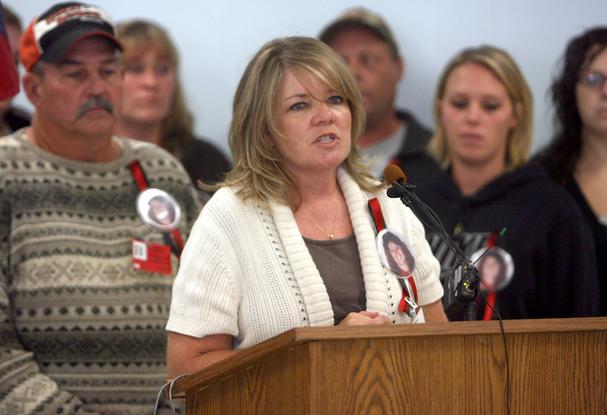
|
In the early morning hours of February 1, 1993, a
car belonging to Judith Gabbard, Michael W. Benge's live-in girlfriend, was
found abandoned on the west side of the Miami River in Hamilton, Ohio. The
vehicle was found near the river with the front passenger-side tire stuck in a
gully. After the vehicle was towed to the impound lot, the tow-truck operator
observed blood on the front bumper and passenger side of the car and notified
the police. The police returned to the area where the car was found and
discovered the body of Judith Gabbard in the Miami River. Her body had been
weighed down with a thirty-five pound piece of concrete which had been placed
upon her head and chest. One of the pockets on the jacket Judith was wearing
was empty and turned inside out. She still had in her possession her checkbook,
cash and jewelry. The police retrieved a tire iron, or lug wrench, from the river
approximately twelve to fifteen feet from where Judith's body was found. A jack
and spare tire were found in Judith's trunk, but no lug wrench was discovered.
Police removed lug nuts from the vehicle, which were sent to a laboratory and
compared with the lug wrench. Although no positive match was made, the lug nuts
did bear markings which were similar to the lug wrench. The police gathered
other physical evidence from the scene which was also tested by a forensic
laboratory. Strands of hair and type A blood (which both Judith and Benge had)
were found on the driver's side front tire. Smears of blood were also
discovered above the passenger-side headlight and on the fender. Police also
found a pool of blood with a tire track through it and blood contained in the
tire treads. According to one of the investigative detectives, this evidence
indicated that the car had been driven through the blood and through the hair
of the victim. An autopsy was performed, which revealed that the victim had
suffered a number of blows to the head with a long blunt object which produced
pattern abrasions and multiple skull fractures, one of which was circular in
nature. According to the coroner, the victim died of brain injuries secondary
to multiple skull fractures which were inflicted with a blunt object. The
police apprehended Benge the next day, on February 2, 1993. When the detectives
approached Benge on the street, they observed him drop Judith Gabbard's ATM
card to the ground. They picked up the card, arrested Benge, and took him into
the station for questioning. After being read his Miranda warnings, Benge
agreed to talk to the detectives. Benge told police that two black men in a
Bronco had chased him and Judith to the river and that their car had gotten
stuck. Benge claimed that one of the men injured Judith and took her ATM card
while the other held him at gunpoint, demanding the ATM code word. When Benge
refused to tell him, the man returned the ATM card to him. Benge escaped by
jumping into the river. As he swam away, he heard Judith screaming as the men
beat her. The detectives told Benge they did not believe his story. Benge told
them he thought he should talk to a lawyer. The questioning ceased at that
point. A short time later, Benge told police he was willing to talk. Benge
signed a Miranda warning card indicating that he waived his Miranda rights.
Benge then gave the police a tape-recorded statement in which he recounted a
different version of what happened the night before. Benge told police that he
had driven to the riverbank with Judith so that they could talk. He said that
they had argued over the fact that he was addicted to crack cocaine. Judith
also accused him of being unfaithful to her. Benge then said he got out of the
vehicle to urinate. At that point, he said Judith tried to run him down, but
the car got stuck in the mud. Benge said that he became enraged, pulled Judith
out of the car, and began beating her with a metal pipe he found lying on the
ground. Benge said he threw her body into the river, face down, disposed of the
weapon and swam across the river. He did not recall whether he put any rocks or
cement on her body. Benge then went to the home of his friend, John Fuller, to
get dry clothes, which Fuller's fiancee, Awantha Shields, provided. During this
second interrogation, Benge was questioned about the ATM card, why he had
dropped it when he saw the police, and whether he had used it after killing
Judith. Benge said he threw down the card because he was scared and he knew he
would not need it anymore. He also told police that he had not used the card
since he killed Judith, although he did allow a man by the name of Baron Carr
to use the card once to get money to purchase crack cocaine. Benge claimed that
the only reason he had the card in his possession was because he and Judith had
used it on January 31, 1993 before they went out that evening. However, the
police discovered through retrieving ATM records that no transaction had taken
place on January 31, 1993 and that two transactions were made following
Judith's death; on February 1, 1993 at 2:45 a.m., a $200 withdrawal was made,
and on February 2, 1993 at 12:01 a.m., another $200 was withdrawn. Benge was
indicted on one count of aggravated murder committed for the purpose of
escaping detection for another offense and committed during the commission of
an aggravated robbery as well as for aggravated robbery and gross abuse of a
corpse. Benge pleaded no contest to gross abuse of a corpse. The case proceeded
to trial on the other charges. At trial, the state called Awantha Shields, who
testified that in the early morning hours of February 1, 1993, Benge arrived at
the house she shared with John Fuller, wearing wet clothes and asking for John.
Benge also asked her if she had ever killed anyone. He then told her that he
and his girlfriend had "got into it" earlier, that it blew over, and
that they went to the river bank. He then told her that they had started
fighting and that he hit her in the head no more than ten times with a crowbar,
put rocks over her head and pushed her in the river. Benge told her that he had
killed his girlfriend to get her "Jeanie" card. He also said that if
the police questioned him he would lie and say that a couple of black guys
jumped him and his girlfriend and beat his girlfriend up. He also told her that
he had given her ATM card to a guy named Baron to get $200 to buy crack cocaine
but that he never saw the money. Larry Carter testified that he and Baron Carr
ran into Benge in the early morning of February 1, 1993. Benge, whose clothes
were wet, asked Carter to excuse how he smelled but that he had just swum in
the river. Carter thought Benge was kidding. Benge told him he had given John
$20 to buy crack cocaine for him and said that he could get more money. Carter
drove Benge and Carr to a Society Bank where Benge withdrew $200 from an ATM;
Carter then bought crack cocaine for Benge. Carter later drove Benge to
Fuller's house. Later that next night, Carter and Baron Carr withdrew another
$200 from Judith's account using her ATM card so that they could buy drugs for
Benge. However, to avoid giving the drugs or money to Benge, the two men
conjured up a story and told Benge that his girlfriend had closed the account.
Benge insisted that she had not. Benge took the stand on his own behalf and
reiterated what he had told police during his second interrogation, including
that Judith had tried to run him down and that he was in a rage when he killed
her. Benge also claimed that he had permission to use Judith's ATM card and did
not rob her. On cross-examination, he admitted losing his job in January 1993
due to his crack cocaine habit and that he had no income at the time he killed
Judith. Benge was convicted of all counts and specifications. Thereafter, the
jury recommended that he be sentenced to death, and that recommendation was
accepted by the trial court. The court of appeals affirmed Benge's convictions
and death sentence. “We have been waiting for this for 17 years,” the Morgan Twp. woman said. “It
makes us feel there was justice for my sister. Now my sister can rest in
peace.” |
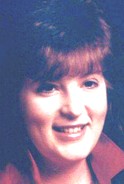
|
Summary: Steckel met 29 year old Sandra Lee Long approximately one week before her murder. Steckel gained access to her apartment by asking to use her telephone. Once inside, he pretended to use the phone, then demanded sexual favors. When she refused, Steckel beat her and threw her onto a couch. During the struggle, Sandra, bit Steckel’s finger causing it to bleed. Steckel then strangled her with a pair of nylons then a sock, causing her to lose consciousness. Steckel then sexually assaulted her, first using a screw-driver he brought with him, and then by raping her anally. He then dragged her to the bedroom and set the bed on fire, then fled the scene. Later the same day, the News Journal received an anonymous phone call from a male who identified himself as the “Driftwood Killer.” The man named his next victim by name. The News 4 Journal contacted the police, and the police brought the woman into protective custody. The woman had previously reported to the police that she had been receiving harassing phone calls with a “very lurid, very sexual” content. The authorities had traced these calls to Steckel. Steckel was arrested in connection with an outstanding harassment warrant for the phone calls to the woman. During the interview, Steckel confessed in detail to his crimes against Sandra Long, as well as other murders.Although some portions of Steckel’s confession lacked credibility, many of the details were confirmed by subsequent investigation by the police, including the autopsy of Sandra, the fire department’s discovery of the points of origin of the fire, DNA testing of blood found on Sandra’s apartment door, which matched Steckel, and the discovery of the nylons, lighter and screwdriver used in the attack. During his trial, Steckel sent a copy of Sandra Long's autopsy to her mother, writing "Read it and weep. She's gone forever. Don't cry over burnt flesh." Long’s mother,
Virginia Thomas, who witnessed the execution spoke briefly afterward to thank
prosecutors, police and the courts for their assistance during this “terrible nightmare.” “Now, hopefully, we will have some
peace and closure.” Bells rang outside the Smryna
prison in protest of the court-ordered execution of Brian Steckel. "I
don't think it's a process that contributes to healing any of the things or
making society safer or healing people's pain," said Kristin Froelich, who
opposes the death penalty. Just a few feet away were people who felt his death would bring justice, including April Walters. She has no pity for the man who tortured and killed her best friend 11 years ago. "This is justice for all the sick people out there that think they can do whatever they can and that they're God. He wanted to be God that day. He killed her, he took her life, he was trying to be God. He's not God," she said. Across a street from the protesters, in another penned area, a different group carried signs supporting the death penalty. "He's still going to die," Dan Blevins, a friend of Long's family from Boca Raton, Fla., shouted as the bell began to toll. "He's going to hell." Nicholas Long, the victim's stepson, held a sign with Long's photograph. "We're going to get some justice at 12 o'clock," he said. After the execution, Long's relatives planned to gather and celebrate, he said. "It's been 11 years. We need to get justice."
|

|
Summary:
Crider's mother, Dale Alexander of Altavista, said Wednesday that her daughter "is still with us. . . . I know very well what's happened, I accept that. But I see all kinds of signs, all kinds of message from her." "It gives me a lot of peace of mind," she said. |

|
Summary:
Lawson said she will drive to Huntsville this morning to watch Anderson get his due and hopefully begin to close the trying 14-year wait for justice to be served. "I'm not a violent person at all, but I am looking forward to this closure knowing that he is going to die for what he did," she said. The family has had to endure the trial - during and after which Lawson said she "couldn't eat or sleep for a while because of it" - and years of state and federal court appeals, which always jolted them back to the gruesome details of Audra's death.
Lawson said she always had the nagging worry that as long as Anderson was alive, other children were in danger. "We had him, but there was still the possibility that he could escape or what have you, and if he did this to another child it would have killed us," she said.
|
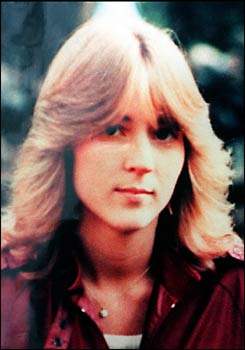
|
Jennifer Tabor said she never thought she
would be able to witness the execution of the man who killed her 19-year-old
stepsister, Stavinsky. Tabor was 12 at the time of the murder, and hatched a
plan in which she would stand outside the gates of the prison on the morning of
Ross' death. "I always pictured myself out there
with the rest of the people, holding a big sign, in favor of his death,"
Tabor said. "I always promised Robin I would be
there on that day." Ross admitted killing eight women -- six in
Connecticut and two in New York -- as part of a crime spree in at least five
states. He was sentenced to death for killing Robin Stavinsky, April Brunais,
Wendy Baribeault and Leslie Shelley in eastern Connecticut in the 1980s.
Stavinsky's sister, Debbie Dupris, said the execution did not give her the
closure she was expecting to feel, but it did serve a purpose. "Finally justice has been served," Dupris
said, "and I know that our sister, Robin Dawn
Stavinsky, is looking down upon us at this moment, and I know that she will
rest easier knowing that the person who ended her life no longer has the
privilege of having his own." |

|
For the families
of the victims, there finally is closure. "The
families are relieved. It was long overdue," said Moore's nephew,
Joe Rigby, who was Scott County's coroner in 1982. He is now the circuit clerk.
Wilcher said before his execution that he didn't want a sedative but changed
his mind as the time neared. Epps said Wilcher indicated he got only an hour of
sleep Tuesday night because he was writing goodbye letters.
Tommy Moore said watching his mother's killer be executed would help him move on with life. "My emotions are better now because it's finally over," Moore said. "We don't have to focus on it all the time. But it just looks to me like he died too peaceful a death compared to the crime he committed." |
|
Summary: Renee Harris Toliver, Flake's niece, said she and other relatives would pray for Taylor. "But not one of us will say he's not deserving of having his life taken," she said. |
|

|
Summary: ACCOMPLICES:
Ronald Luff - Aggravated Murder (5 counts), Kidnapping (5 counts) - 170 years
to Life.
Daniel Kraft - Aggravated Murder (5 counts), Kidnapping (3 counts) - 50 years
to Life.
Gregory Winship - Murder (5 counts), 15 years to Life.
Richard Brand - Murder (5 counts) - 15 years to Life.
Sharon Bluntschly - Conspiracy to Aggravated Murder - 7-25 years.
Deborah Olivarez - Conspiracy to Aggravated Murder - 7-25 years.
Kathryn R. Johnson - Obstructing Justice - 1 year. Dennis Patrick - Obstructing Justice - 18 months, sentence suspended and placed on 1 year probation. Tonya Patrick - Obstructing Justice - 18 months, sentence suspended and placed on 1 year probation. "He got what he deserved," said Bailey, who said the family has suffered depression and nightmares from the horror. In a written statement, Bailey said he was convinced that Lundgren would kill again if he were released from prison. "There is only one sure way to make sure this never happens again: To be sure his life is forfeited for the terrible deeds he has done. The memories of his victims and the welfare of society and demands of justice all dictate this final act of cleansing," Bailey wrote. "My only regret is that he has but one life to give."
|
|
Summary:
"This is the end of a nightmare," Wesley Wuertz said after the execution. "There's no more waiting for the next appeal, no more wondering if a technicality will get him off. Š What he got tonight was justice." |
|
|
"We're feeding and clothing him all these years and his family has had all these extra years with him," Claudette Shaffer, the daughter of the shooting victim, said after watching Nichols die. "They had a chance to say goodbye. We've never had that chance. Something is askew." Nichols' vulgar final statement, she said, "just reaffirmed the image I had of him: No feeling, no remorse, no concern for anyone." She said she was eager to tell her 90-year-old mother, who couldn't attend the execution because of health concerns, of Nichols' death. "She is going to be very happy," Shaffer said. "She's been waiting since 1982." |
|
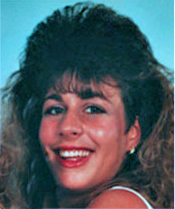
|
It was the answer for Ellen Jane Harris, who has wanted Filiaggi dead since he killed her daughter, Lisa, on Jan. 24, 1994. "He was an animal going after his prey," Harris told reporters after witnessing the execution. "I realize his death will not bring my daughter back, but he has caused harm and pain to so many other people over the years, both physical and emotional." Harris acknowledged that while some people believe that lethal injection is cruel, "I wish Lisa would have gone in such a peaceful manner." |
|
Summary: During a robbery of Lee's Famous Recipe Chicken in Tulsa, Hamilton and three accomplices herded four employees into the restaurant's walk-in cooler and shot each once in the back of the head at close range with a .38 handgun, then left them to die. The robbery netted slightly more than $2,000. William Hamilton, Corey Hamilton's brother, Donnie Daniels and Tyrone Johnson all were sentenced to life in prison for their part in the crime. Hamilton received the death penalty in part because one of the co-defendants testified he was the shooter. Gooch's mother, Patricia Hudson, said after the execution that "I am grateful it is over." Gilbert Lara, the husband of Sendy Lara, said he was not troubled by Hamilton's lack of an apology in his last words. "He took my wife," Lara said after the execution. "He'd just be wasting his time saying, 'I'm sorry.' " Before the execution took place, a written statement was released from the Laras' daughter, Amanda Lara of Dallas. She was 6 when her mother was killed. "After all of these years of pain and suffering, of sleepless nights and nightmares, the day has finally come when Corey Duane Hamilton will be executed," she wrote. "My mother was only 26 years old when she was taken away from us. . . . Today my sister turned 16 years old. She was 18 months old when our mother passed away. "I regret that she did not get to know how wonderful our mother was. I try to make sure that in some way, through our memories, she can know her as I did." |
|
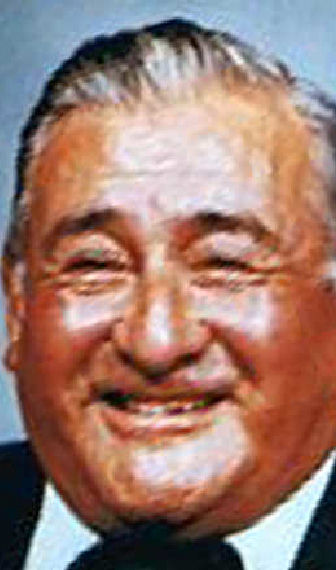
|
The victim’s son, Gene Placencia, who lives in Ridgecrest, Calif., said he wants to watch the execution to show support for the system. “I won’t be there because I’m bitter. I won’t be there because I hate him — I don’t care for the person, but I don’t hate him,” he said. “We’re going to be there because we need to support our courts and we need to support the laws that have been set forth.” |
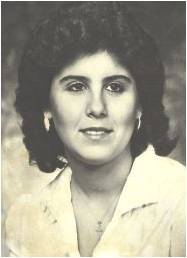
|
Richard Wade Cooey II died peacefully Tuesday with a lethal combination of drugs administered through two needles inserted gently into veins in each arm. He was executed by the state of Ohio for the rape and murders -- by bludgeoning and strangulation -- of two college students who were not afforded such comfort in their deaths. "It's done," said Mary Ann Hackenberg, mother of one of the victims, Dawn McCreery, who said she could sense her daughter's presence in the death chamber. "I know she was there," she said. "I felt her there." Hackenberg, of Rocky River, one of six witnesses from the McCreery family, said, "They got it," when the needle was inserted.
"Just being spiteful to the very end," said McCreery. "It just shows how much this was warranted and justified." "The thing that's going to now
give us the greatest comfort is knowing that he now has to be accountable to a
power greater than himself and now he's got to reckon with that," said Dawn McCreery's
cousin, Kathy Miska, one of the execution witnesses. Rob McCreery said he had hoped for the execution for so long -- he was 17 when his big sister was killed -- that he's not sure where to turn his attention now. "But I can tell you it was a nicer day coming out of there than
it was going in,"
he said. Rob
McCreery said he had hoped for the execution for so long -- he was 17 when his
big sister was killed -- that he's not sure where to turn his attention now. "But I can tell you it was a nicer day coming out of there than
it was going in," he
said. Perfect for execution day. "You reap what you sow," said Nicole McCreery, Rob's wife. |
|
Summary: Kirkland was among five relatives of McCormick to watch the execution. "We came here today with justice on our minds and heaviness in our hearts," Kirkland said in a statement released after Griffith's death. "This is merely the end of another chapter in our story and with this end may it bring peace to our family." |
|
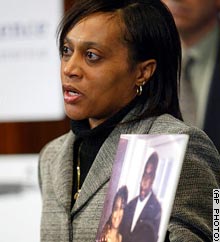
|
Sonia Hollingsworth-Wills, the mother of
Conrad Johnson, the last man slain that October, sat in the back seat of a car
outside the prison before the execution, which she chose not to witness. But
she said she wanted to be there and was counting the minutes until Muhammad's
death. "It was the most horrifying day of my
life," she said. "I'll never get
complete closure but at least I can put this behind me." |
|
Summary: Orr's granddaughter, witnessed the execution on behalf of the victim's family, Corbett said. "The family of Annie Laura Orr has seen the final chapter of this lengthy 27-year struggle come to an end. We are grateful that justice has finally been served," said Binion. |
|

|
Summary: Bieghler was in the business of buying and selling marijuana. Tommy Miller sold drugs for Bieghler. After one of Bieghler’s chief operatives was arrested and a large shipment seized, he suspected Miller of “snitching” on him. Bieghler and his bodyguard, Brook, drove to Miller’s trailer near Kokomo, and while his bodyguard waited outside, Bieghler went in and shot both Tommy Miller and his pregnant wife Kimberly with a .38 pistol. A dime was found near each body. He was later arrested in Florida. Brook cut a deal and was the star witness for the State at trial. While the gun was never recovered, nine .38 casings found at the scene matched those found at Bieghler’s regular target shooting range.
Priscilla Hodges said she hopes Bieghler made peace with God before he died and she hopes he is with God. She still thinks he deserved to die. "I believe in the death penalty and, yes, I believe Marvin deserved to die," she said. "Because I believe he killed my children." |
|
Summary: The nude body of 28 year old Jo Talley Cooper was discovered by her husband in the living room their Norman residence shortly after 1 p.m. on February 25, 1987. Cooper, who was four months pregnant, was bound with leather straps and duct tape causing her death by strangulation. A child's plastic toy was found inserted in her vagina, and tears were noted by the medical examiner in her rectum and vagina. Welch entered the home by posing as a cable television repairman, having lost his job the day before. The case went unsolved until 10 years later when Welch’s DNA was matched to a similar crime scene in the 10-year-old unsolved murder case of Debra Stevens, whose nude body was also discovered in her family’s home outside Tuttle less than three months after Cooper’s death.. Welch was serving time in prison for attempted murder, assault with a deadly weapon and kidnapping in 1997 when he was linked by DNA to the killings of Cooper and Stevens. In a letter to the Oklahoma Pardon and Parole Board last month, Travis Cooper urged the board to deny clemency for Welch and wrote of the pain of growing up without his mother. "It would be different if my mother would have died of natural causes," he wrote. "It would be different if it was God's will, but the truth is that an evil man named Frank Welch took her life. "And the unspeakable things he did to her, my mother, is what fills me with anger, the pain, and the loneliness that I feel to this day." Nearly two dozen members of Cooper's and Stevens' families witnessed Welch's execution. "My sister Talley was a beautiful person and will always be remembered for her friendliness, her laugh and her love and passion for life," Cooper's brother, Jeb Anderson, of Franklin, Tenn., said after the execution. "Now with the finality of the long legal process, it is our hope that the memory of her horrible death will diminish." |